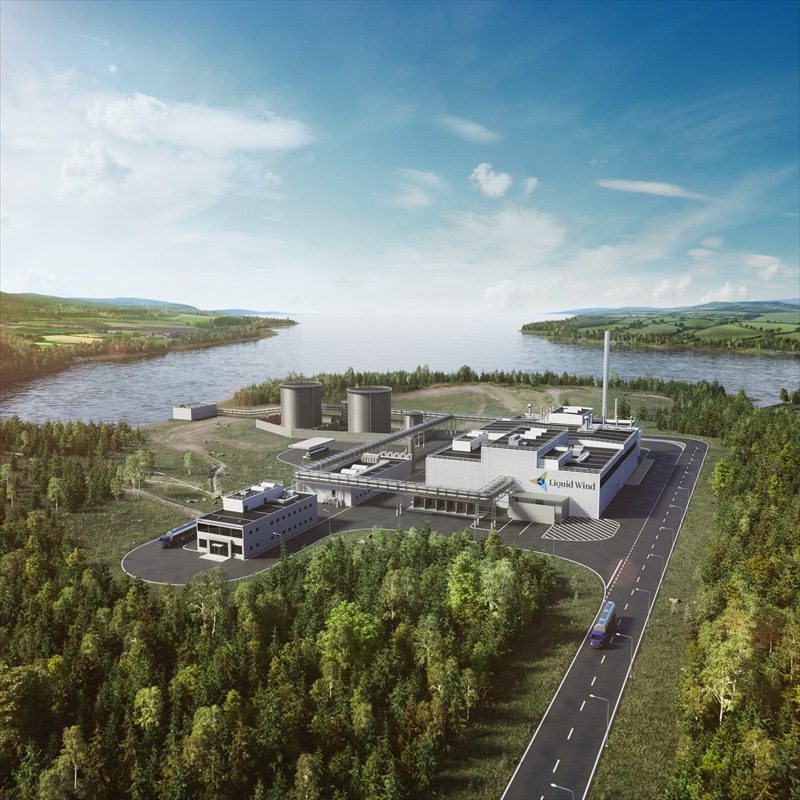Liquid Wind, in collaboration with global decarbonization frontrunners Alfa Laval, Carbon Clean, Siemens Energy, and Topsoe, proudly announces the inauguration of the eFuel Design & Performance Centre (DPC) in Hørsholm, Denmark. This innovative hub is set to propel the advancement of eFuel technologies, enhance production capabilities, and expedite the market introduction of sought-after eFuels at an industrial scale.
Marking a first in the industry, the eFuel DPC features a collaborative research and development (R&D) department, where all five partners will join forces to fast-track the development of eMethanol facilities. This collaborative effort aims to cultivate the technical know-how essential for constructing eMethanol plants swiftly, efficiently, and cost-effectively, enabling their global rollout. The DPC leverages the cutting-edge technologies and modular solutions of its partners to provide ready-to-build eMethanol plant blueprints, streamlining the fabrication, transportation, construction, and commissioning processes.
The establishment of the DPC represents a significant leap forward in the design and deployment of eFuel facilities, aiming to supply approximately 100,000 tons of eMethanol annually. Currently, three projects are in the pipeline in the Nordics, including FlagshipONE, heralded as the world’s inaugural commercial-scale eMethanol plant. The ambition extends to developing up to ten more plants by 2027, poised to make a substantial impact on the global eMethanol market and aid emissions reduction in sectors challenging to decarbonize, such as global shipping.
Claes Fredriksson, CEO and founder of Liquid Wind, expressed enthusiasm for the DPC’s launch, highlighting its pivotal role in electrifying transportation and spearheading sustainable fuel production. Anne-Laure de Chammard of Siemens Energy emphasized the necessity of green molecules for the energy transition, advocating for scalable and optimized production facilities. Julien Gennetier of Alfa Laval stressed the importance of cross-sector collaborations for accelerated decarbonization, while Aniruddha Sharma of Carbon Clean and Sundus Cordelia Ramli of Topsoe underscored the collaborative effort’s potential to foster innovation and hasten the shipping industry’s decarbonization.
Initiated in 2020, this partnership is dedicated to combating global warming by serving as a vital technology provider for decarbonizing industries traditionally resistant to change, underscoring a united commitment to a sustainable future.
About eMethanol
eMethanol, also known as green methanol or renewable methanol, is methanol produced using renewable energy sources. Unlike conventional methanol, which is typically derived from fossil fuels through the steam reforming of natural gas or coal gasification, eMethanol is manufactured in a way that significantly reduces carbon dioxide emissions, aligning with sustainable and environmentally friendly practices.
The production of eMethanol involves two key components:
Carbon Dioxide Capture: The process begins with the capture of carbon dioxide (CO2), either directly from the air (Direct Air Capture, DAC) or from industrial emissions. This step is crucial for reducing the carbon footprint and making the process more sustainable.
Hydrogen Production: Hydrogen is produced through the electrolysis of water, a process that splits water (H2O) into its component parts—hydrogen (H2) and oxygen (O2)—using electricity. When this electricity is sourced from renewable energy (such as wind, solar, or hydroelectric power), the hydrogen produced is considered green or renewable.
The final step involves synthesizing the captured CO2 with the green hydrogen in a catalytic reactor to produce methanol (CH3OH). This reaction typically occurs under pressure and at high temperatures in the presence of a catalyst.



